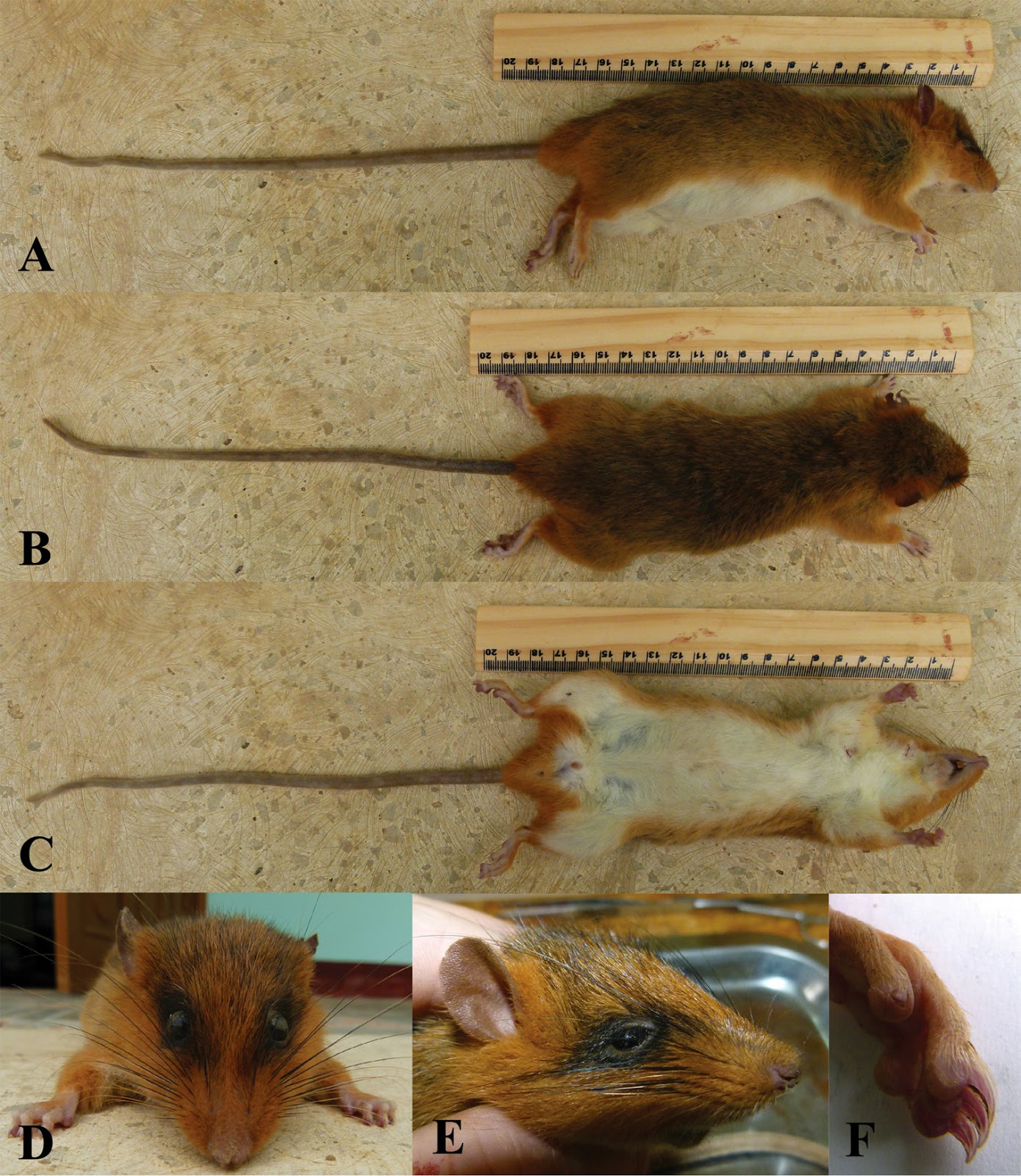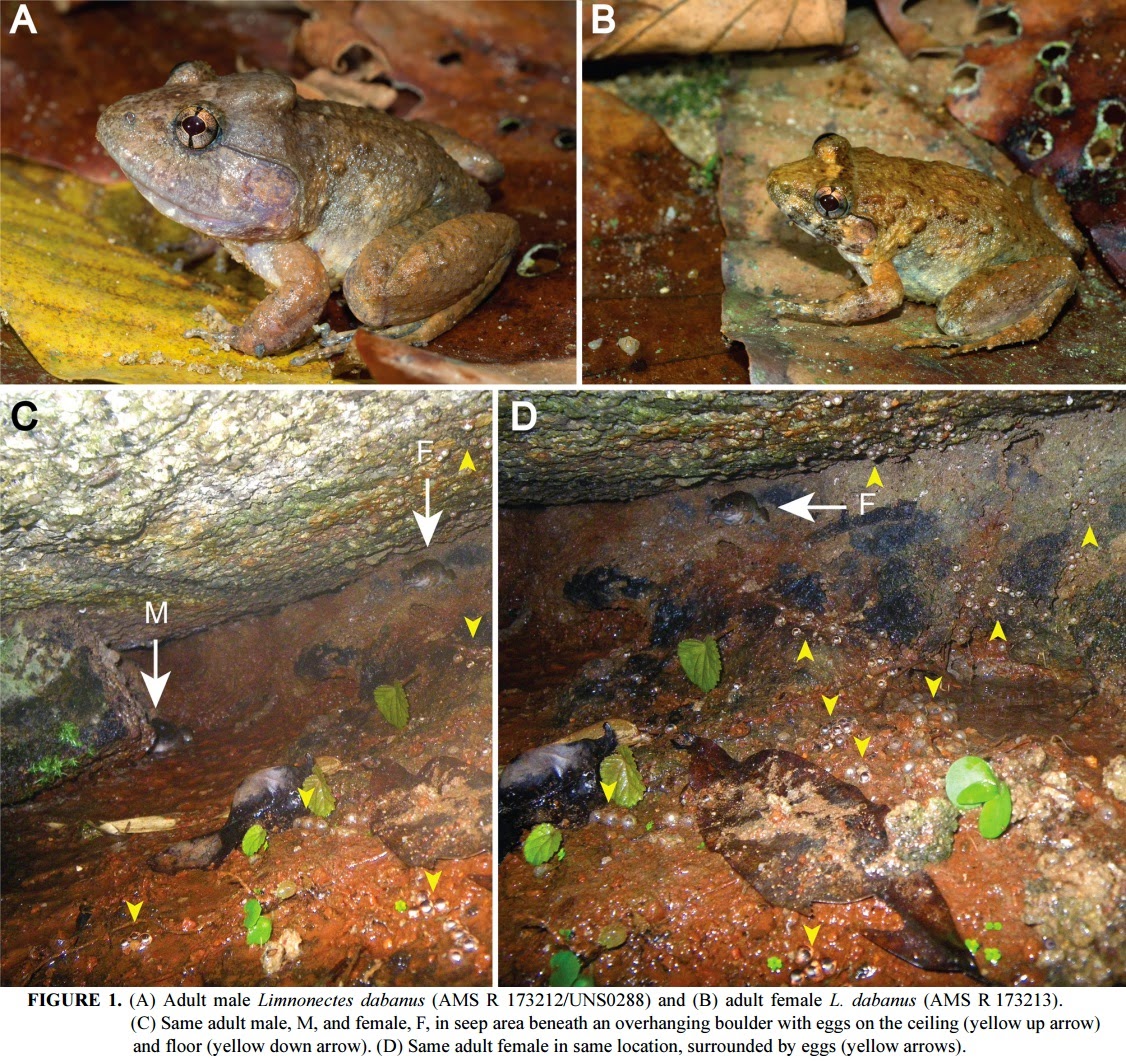[Most Recent Entries] [Calendar View]
Tuesday, November 4th, 2014
| Time | Event |
| 9:49a | [Mammalogy • 2014] Phylogenetic Relationships in the Niviventer-Chiromyscus complex (Rodentia, Muridae) inferred from Molecular Data, with Description of A New Species from Vietnam Abstract Based on molecular data for mitochondrial (Cyt b, COI) and nuclear (IRBP, GHR) genes, and morphological examinations of museum specimens, we examined diversity, species boundaries, and relationships within and between the murine genera Chiromyscus and Niviventer. Phylogenetic patterns recovered demonstrate that Niviventer sensu lato is not monophyletic but instead includes Chiromyscus chiropus, the only previously recognized species of Chiropus. To maintain the genera Niviventer and Chiropus as monophyletic lineages, the scope and definition of the genus Chiromyscus is revised to include at least three distinct species: Chiromyscus chiropus (the type species of Chiromyscus), C. langbianis (previously regarded as a species of Niviventer), and a new species, described in this paper under the name C. thomasi sp. n. Keywords: White-bellied rats, Fea’s tree rat, Southeast Asia, Vietnam, molecular phylogeny, taxonomy, new species Alexander Balakirev, Alexei Abramov and Viatcheslav Rozhnov. 2014. Phylogenetic Relationships in the Niviventer-Chiromyscus complex (Rodentia, Muridae) inferred from Molecular Data, with Description of A New Species. ZooKeys. 451: 109–136. doi: dx.doi.org/10.3897/zookeys.451.7210 |
| 11:04a | [Herpetology • 2014] The Breeding Behaviour, Advertisement Call and Tadpole of Limnonectes dabanus (Anura: Dicroglossidae) Abstract Fanged frogs (Limnonectes) are a group of dicroglossid frogs from Asia that often have reversed sexual dimorphism with larger males. Limnonectes dabanus is a poorly known species of fanged frog from forested habitats in southern Vietnam and eastern Cambodia. Adult males exhibit an extreme degree of megacephaly and possess bizarre head ornamentation. L. dabanus breeds in shallow, non-flowing or very slow-flowing pools, puddles, and drainage ditches. Eggs are laid as a widely spaced array, and the larvae have a morphology typical of pond-dwelling tadpoles. Although males of the species lack vocal sacs, they produce a low-pitched (0.4–0.6 kHz), single-note advertisement call that sounds like a drop of water falling into water. Given the spacing of calling males, presence of multiple females near breeding sites, and reversed sexual dimorphism, the mating system of L. dabanus may be an example of resource-defense polygyny, and the massive head of the male is likely used in male combat. Keywords: acoustics, amphibian, larvae, reproductive behaviour, Southeast Asia Rowley, Jodi J. L., Duong T. T. Le, Duc H. Hoang & Ronald Altig. 2014. The Breeding Behaviour, Advertisement Call and Tadpole of Limnonectes dabanus (Anura: Dicroglossidae). Zootaxa. 3881(2): 195–200. DOI: 10.11646/zootaxa.3881.2.8 |
| << Previous Day |
2014/11/04 [Calendar] |
Next Day >> |


